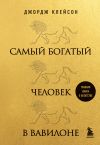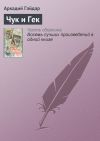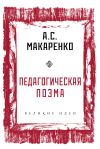Текст книги "Glimpses of Britain. Reader"

Автор книги: Алексей Минченков
Жанр: Иностранные языки, Наука и Образование
Возрастные ограничения: +12
сообщить о неприемлемом содержимом
Текущая страница: 1 (всего у книги 10 страниц) [доступный отрывок для чтения: 2 страниц]
Glimpses of Britain. Reader
Автор-составитель А. Г. Минченков
© Минченков А. Г., 2006
© Антология, 2006
Prescott’s folly
by Roy Strong
Daily Mail, August 5, 2004
So, New Labour’s control police have struck again. In its infinite wisdom, John Prescott’s department has announced that all new large country houses must be based on modern and innovative architecture rather than replication of the past.
The ignorant Keith Hill, Housing and Planning Minister, wants to change “the face of new country house architecture from a pastiche of historical styles to innovative cutting-edge design… creating buildings that people will want to visit in 100 years’ time”.
The arrogance of such a remark is mind-blowing. What right has any government, short of a fascist Mussolini-style dictatorship, to lay down architectural style for anyone? What right has Hill – no architectural expert himself – to dismiss the distinguished work of a raft of today’s architects as “pastiche”?
And is it any surprise that New Labour crony Lord Rogers – he of the ghastly Dome, which is still swallowing oceans of taxpayers’ money four years on from the millennium – is one of the few who welcomes the decision as “tremendous news”?
This appalling ignorance of our architectural history is shared, somewhat surprisingly, by George Ferguson, President of the Royal Institute of British Architects, who also applauds the Government’s stance with these words: “The country house has, throughout the ages, been one of the defining elements of our architectural and social history.”
That sounds all right, but what he does not say is that the architectural and social history to which he refers has been written by our ability to use the architectural styles of past and adapt them for modern-day living. But this “revivalism” is the very concept that is now so abhorred. What Mr Ferguson, Mr Hill and the lumpen John Prescott betray is a profound ignorance of this country’s architectural history. At no period in that history has the past not been relived. We have always looked back while simultaneously embracing the new. That is why so many Victorian country houses were built in the style of the 14th century and yet included every up-to-date mod con. Take the medieval form of the castle. If the likes of Hill and Prescott had been around in 1485, no one would have been allowed to build one after the Wars of the Roses.
And yet the Elizabethans built medieval castles, so did the Georgians. Castles sprang up everywhere through the Regency and Victorian periods, and medieval castles were still being built after 1914 as anyone who visits Sir Edwin Lutyens’ masterpiece Castle Drogo in Devon – which went up between 1910 and 1930 – knows.
Or, to take another instance. The Gothic style didn’t die with the Middle Ages. Gothic churches were erected in the 17th century and Gothic took off again in the 18th, rising to a floodtide in the Victorian period.
If Prescott and Hill had their way, all those Gothic country house masterpieces such as Lacock Abbey in Wiltshire, Arbury Hall in Warwickshire, Strawberry Hill in Twickenham or Tyntesfield in Somerset – which has just been bought by the National Trust – would never have been built.
Or, to expose the absurdity even further, Inigo Jones’s 17th century Queen’s House at Greenwich – the foundation stone of the Renaissance classical style in England and based on the architecture of ancient Rome – would have been vetoed. You could even say that Chatsworth and Blenheim would not have been allowed.
There is absolutely nothing to be ashamed of in an architectural style which offers a strong evocation of the past. Almost everyone feels comfortable with something that recalls our common history.
The last time the Government exercised this kind of control was in the post-war period when, under the aegis of Labour, the modernists dominated local planning.
We now lament the horrors perpetrated during the Sixties by architects driven on by disastrous social-engineering projects which resulted in hideous tower blocks, the wiping out of historic town centres and horrendous shopping malls and community centres.
Let me say at once that I have nothing against modernist architecture if it is good. But, like New Labour, it is and has always been essentially urban – a style not easily transported to rural locations.
The Tories introduced legislation known as Gummer’s Law, which allowed new country houses to arise in whatever style the owner opted for, whether classical, gothic, modernist or indeed post-modernist.
As a consequence there was a renaissance in country house building – beautiful houses which often utilise the classical repertory of the past but are, at the same time, very much of their own day. They epitomise the way that we have always built country houses.
But New Labour, in its ignorance and desire to control how people should live, has simply flushed this proud tradition down the plughole.
The first media queen
by Dr John Plunkett
BBC History, April 2003
The Queen’s diaries are a popular bestseller, yet her photographs are allegedly manipulated by retouchers. There are calls for the Prince of Wales to show himself more to the people, yet his engagement photographs are criticised for being too intimate and revealing. No, these are not the feverish dreams of an editor of one of today’s Fleet Street tabloids, but episodes that did take place – in the 19th century.
A charged relationship between the monarchy and the media is not a new concern. Queen Victoria was the first monarch to cope with the type of attention that has since become the norm for the British monarchy. During Victoria’s reign, the royal family was a beneficiary of a new mass print and visual culture, but was subjected simultaneously to its demands and intrusions. In conjunction with industrialisation and constitutional reform, a popular publishing industry helped reinvent the position of the monarchy in national life.
The first decade of the reign coincided with the growth of popular weekly newspapers and the first periodicals devoted to graphic news. The News of the World began publication in October 1843, six years after Victoria’s accession. It belonged to a new genre of newspapers aimed at a readership unable to afford a daily paper, and which lacked the leisure to read one. Matching this growth were the more expensive illustrated periodicals supplying graphic news. The Illustrated London News began its long life in May 1842, and was soon joined by several imitators. Prior to this, very few newspapers had provided illustrations of contemporary events. The development of illustrated periodicals and a popular press played a significant role in creating a new style of monarchy, one built around an increasingly public role. During the 1840s and 1850s, Victoria and her husband Albert undertook an unprecedented number of civic engagements, regional tours and international visits. The publicity these received helped promote an image of a monarchy in touch with its subjects.
Emotional interaction
Illustrated newspapers also created an emotional interaction with the royal family by showing intimate details of palace life. Its artists adopted the position of confidential onlookers. In an engraving produced by The Illustrated London News of the visit of the French king, Louis-Philippe, a state visit was turned into a domestic occasion. Press coverage provided an intimate experience of the public and domestic activities of the royal family. The creation of Victoria as a popular monarch was inseparable from the way her life was presented as royal news. In 1868, extracts from her journal of her journeys in the Scottish Highlands sold over 100,000 copies.
Despite the political benefits that Victoria and Albert received from their fulsome coverage, reporters were kept at arm’s length by the court. Newspapers were only allowed limited access to royal events. Journalists had a low social status and were far from being regarded as “Gentlemen of the Press”. Courtiers were unwilling to acknowledge their role in creating an intimate bond between monarchy and subject. At the wedding of the Princess Royal in January 1857, only ten journalists were granted official access to St James’s Palace. Reporters were seated high up in the Chapel Royal. Spencer Ponsonby, the Lord Chamberlain’s assistant, chose this position because “it would be more out of the way than any other place in the Chapel, for I suppose we could not call upon the reporters to wear full [Court] dress”. Reporters could not be excluded; nevertheless they were placed at the edge of proceedings. Ponsonby compensated for the reporters’ lack of court dress by having a red silk curtain screen off the members of the press.
The wedding established an etiquette of journalistic invisibility. This semiofficial understanding between reporters and courtiers did not, however, prevent fractious encounters. At Balmoral in the early 1870s, there was often a carriage of journalists ever eager to follow Victoria. Protocol meant that they were nevertheless expected to stay out of sight. On one occasion, a carriage of reporters was following Victoria on a drive, only to be caught unawares when her carriage suddenly turned around. The reporters’ carriage was forced into a ditch in order to let her pass. She reportedly had a hearty laugh at their expense.
The wariness of the royal household towards the media was far from unwarranted. Royal reportage was attacked for its intrusive practices and purple prose. Journalists veered between intrusion and idolatry. Satirical journals such as Punch frequently attacked the sycophantic coverage of Victoria. The deferential language of royal reporting was claimed to falsify the gloss of the monarchy in the same way that its true nature had formerly been hidden by the ceremonial court splendour. In 1846, Punch published a mock proclamation from Victoria to the press, demanding that “all Vain, Silly, and Sycophantic verbiage shall cease, and good, Straightforward, Simple English be used in all descriptions of all Progresses made by Ourself, Our Royal Consort and Our Dearly Beloved Children”.
The court newsman was one means by which the monarchy pro-actively influenced its press coverage. Photographs of the royal family were subject to an even more subtle form of manipulation. The release of the first public royal photographs, in August 1860, was a huge success. The intimacy and realism of the camera emphasized Victoria’s ordinariness. Indeed, Victoria’s initial photographs were renowned for being less than flattering, while engagement pictures of the Prince of Wales and Princess Alexandra in 1862 were criticized for being too intimate. After the 1880s, though, many royal photographs were retouched in the same way that celebrity photographs are now digitally airbrushed. Blemishes and wrinkles were removed, waistlines narrowed and dark shadows lightened. Retouching was common, undertaken partly due to sitter’s vanity and partly to technical imperfections in the negative.
A photograph taken by the Bassano Studio in 1882 demonstrates the extent to which Victoria’s photographs were altered. In the picture, her cheeks and jowls have received attention from the retoucher. The removal of flesh from under her chin is evident in that the area there has a lighter tone. The tiny queen has also been placed on a platform to accentuate her height. Reviews of Victoria’s later photographs complained that her subjects were unable to get a truthful portrait. In August 1887, Photographic News disparagingly noted that a new set of pictures, were, like all published portraits of the Queen, fabricated. It complained that the public had to be content with a “mixture of photography and monochrome intricacy”. Significantly, the Photographic News presumed that, because the photographs had been made available, they had inevitably been manipulated. The Crown might never die but Victoria’s photographs were concerned with showing a monarch whom age did not touch. It was not simply that Victoria seemed an unchanging figure in a disorienting world: judging by her photographs she was unchanging.
A dying Queen
The media attention received by the royal family during the 19th century culminated in the death and funeral of Queen Victoria in January 1901. As the Queen lay dying at Osborne House on the Isle of Wight, hundreds of British and foreign journalists gathered at the gates to receive the latest bulletins on her condition. Crowds waited at telegraph stations all over the British Empire for news of the Great White Empress. The telegraph network helped to bring together nation and empire in one global community. There were nevertheless numerous incidents of disreputable journalistic behaviour during Victoria’s final illness. The episode that caused the most public outrage took place after the Queen’s death was announced to the press pack waiting at the Osborne gates. Immediately, they rushed to East Cowes telegraph office to relay the news to the waiting world, some running, some on bikes, and some on horseback. Many shouted “The Queen is Dead!” in their headlong charge. Such disrespect was widely condemned.
Several newspapers also printed fake reports of the events around the Queen’s deathbed. The Press Association news agency put out a spurious interview with one of the physicians attending the Queen, while one illustrated newspaper published a sketch of a touching death-bed reconciliation between Victoria and her grandson, Kaiser Wilhelm II of Germany. Court officials were assiduous in tracking down those responsible for these fabrications. With access to all messages sent from Osborne, they were able to confirm which reports had been invented. At least two correspondents promptly found themselves recalled to their newspaper’s offices after the intervention of courtiers. All these incidents of journalistic sharp practice were widely commented upon, accentuating Victoria’s death as a media event.
The growth of a mass media helped to maintain the royal family as an overarching yet intimate presence. Like a Russian doll, the icon of Victoria was made up of countless different smaller versions. Her status as national and imperial figurehead and her promotion as the Mother of her People, have to be understood in relation to the growth of different media. In terms of the media making of the monarchy, Victoria and Albert set precedents that continue to play an important role in defining the representation of the royal family today. Subsequently the media were assimilated into practices that they had first established. Thus, whereas Victoria and Albert’s royal tours were broadcast via the new illustrated press, the imperial tours of their children and grandchildren received comparably novel coverage from the new cinematograph. Important 20th century continuations of this relationship include the first Christmas Day radio broadcast by George V in 1932; the televising of the coronation of Elizabeth II in 1953; and the royal wedding of Prince Charles to Lady Diana Spencer, in 1981.
1966 and all what?
by Laura Clark
Daily Mail, August 5, 2004
The past seems to be something of a closed book to many young Britons. William the Conqueror, for example, may have changed the course of our history in 1066, but he remains largely a mystery man.
In a survey, almost half of 16 to 24-year-olds could not identify him as the victor of the Battle of Hastings.
Amazingly, more than one in five believed it was Alexander the Great and 13 per cent said it was Napoleon.
The BBC poll, published today, also reveals that less than half of the young Britons knew Sir Francis Drake fought in the English fleet against the Spanish Armada. One in five believed the hero of England’s victory in 1588 was Christopher Columbus. And the same number thought it was either Horatio Hornblower or Gandalf – both fictional characters.
The findings left education campaigners aghast at young people’s lack of knowledge about their nation’s past.
Ignorance, however, was not entirely confined to the younger age groups. The survey of 1,000 Britons from 16-year-olds to pensioners uncovered glaring gaps in many people’s knowledge of key historical events that shaped our history.
They may have given us our calendar, our roads, the first modern toilet and contributed to our language, but one in five Britons were unaware the Romans ever came here at all.
One in ten 16 to 24-year-olds actually thought Britain was conquered by Germany.
And despite this year’s widespread coverage of the 60th anniversary of the D-Day landings, a third of respondents failed to answer a basic question about the Second World War.
Just 69 per cent knew the Battle of Britain took place during the 1939–45 conflict, with the figure dropping to 51 per cent among 16 to 24-year-olds.
A fifth of that age group believed it occurred during the First World War, while 12 per cent said it was fought 600 years earlier, during the Hundred Years War involving England and France.
Just half of those polled knew the name of the battle celebrated by Orangemen in Northern Ireland every July 12.
Only 18 per cent of 16 to 24-year-olds correctly identified it as the Battle of the Boyne, where Catholic King James II’s troops were defeated by Protestant William III in1690.
A quarter believed the Orangemen were celebrating the battle of “Stamford Bridge” while one in ten answered the Battle of the Bulge.
An astonishing 15 per cent thought the answer was “Helmsdeep” – the fictional battle that marked the climax of The Two Towers, the second novel in Tolkien’s Lord of the Rings trilogy.
The figures, released to mark the start tomorrow of BBC2’s Battlefield Britain series on landmark conflicts, prompted calls for history to be made more prominent in the school curriculum.
Nick Seaton, chairman of the Campaign for Real Education, said: “The survey clearly shows that our state education system has got a lot to answer for.
A grounding in national history is essential for all young people in order to understand the present. This is extremely shocking. Last month, education watchdog Ofsted said secondary schools spent too little time teaching teenagers about the British Empire and too much on Nazi Germany.
Time spent on the Empire as a topic could amount to one lesson a year for 11 to 14-year-olds and almost nothing for GCSE pupils.”
Peter Snow, who presents Battlefield Britain with his son Dan, said: “It’s at once a shock and a challenge that so many people can be so wrong about some of the key moments in Britain’s past.”
How I see it
by Robert Hardman
Daily Mail, August 4, 2004
They all thought it was going to be a bit of a lark on the other side of the Channel. No one expected to see their best mate liquidised by a shell or choke to death on mud and gas in a rat-infested quagmire. As far as Fred Lloyd and his pals were concerned, they were just going to give the Kaiser a bloody nose.
Back then, it was simple. Germany had rejected Britain’s ultimatum to uninvade Belgium and so mighty Britain was at war with silly Germany. It would all be over by Christmas, of course.
Today, Mr Lloyd and an extraordinary little band will bring Whitehall to a halt as they gather to recall how horribly wrong the world got it that fateful day – August 4, 1914.
It seems incredible that there is anyone alive with a first-hand story of World War I. But Britain still boasts 23 veterans of that monstrous conflict.
And at 11 this morning, four of George V’s men will be at the Cenotaph to mark the day the world changed.
“We never thought it would last long. No one thought of it as the Great War then. It was just going to be a skirmish,” says Mr Lloyd, 106, still shuddering at the naivety of it all. “All those boys. Thousands of young boys dying in an hour. It’s just so stupid.”
It certainly did not seem stupid to 16-year-old Fred Lloyd, then a gardener on a country estate at Uckfield, Sussex. Nor did it seem stupid to William Stone, then a 14-year-old farmhand at Sherford Down Farm in Devon.
“I was working with the cows at the time. The postman came up and told us: ‘We are at war with Germany,’ ” says Mr Stone, now 103. “We were all anxious to join as soon as we could.”
He was too young to enlist at the time but remembers that one of the other lads on the farm went straight off to the Royal Marines and thence to a watery grave off the Orkneys in HMS Hampshire, alongside Lord Kitchener and 641 other men.
Mr Stone, who went on to serve in the Royal Navy in both World Wars, is due to give a reading shortly after Big Ben chimes 11am. Alongside him will be Henry Allingham, Britain’s oldest war veteran. He turned 108 two months ago, on the very day that those young pups, the Normandy veterans, were marking the 60th anniversary of D-Day.
He was yet another excited young man on August 4, 1914. Already obsessed with motorbikes, he saw the war as an opportunity to ride a racier model and immediately tried to enlist as a dispatch rider at a London recruiting office.
But the Royal Engineers had enough riders already and Mr Allingham’s widowed mother was unwell. So he remained at home until her death the following year when he promptly entered the Royal Naval Air Service.
The fourth member of this morning’s gallant quartet will be Jack Oborne, who was a 14-year-old apprentice carpenter on the day that war broke out.
It would be another three years before he put on a uniform, although he would still have more than enough time to experience the very worst that the Western Front had to offer.
This morning may be the anniversary of the day it all began. But August 4, 1914, will not be uppermost in the minds of these men. As a bugler sounds the Last Post, they will be remembering what happened next.
Fred Lloyd, the youngest of 16 orphaned children, wanted to follow his three older brothers into the Army but was turned down by the local Sussex Regiment for being too short. He was, though, allowed to join the Royal Artillery to look after the horses which were still vital to trench warfare. Despite an attack of meningitis which nearly killed him, Private Lloyd made it out to northern France, where it was his task to take fresh horses up to the line and bring the sick ones back. To this day, he is baffled by the number which lost their sight. “Hundreds of horses went blind in that war, but I don’t think anyone ever worked out why that was.”
He remains very reluctant to discuss the sights he saw, so much so that he has never even shared them with his family. “He opened up to me once about it, telling me how everything from thoroughbreds to old nags were just blown to pieces. But it made him very distressed,” says Dee Johnson, who looks after Mr Lloyd at the Thornbury Residential Home in East Sussex.
Of his three brothers, one was killed at Arras, one died at the Somme and the third returned home with shrapnel in his head. Mr Lloyd still regards himself as one of the lucky ones.
So, too, does Mr Stone. “Every day, I think what a bloody lucky man I am to be here,” he tells me from the Oxfordshire home where he still lives alone, doing his daily exercises with his chest-expanders and handgrips: “I’ve got such a strong handshake, people won’t shake hands with me.”
By the time he joined the Royal Navy, the war was nearly over, although he still remembers seeing the German fleet scuttled at Scapa Flow. But if his youth was an asset in the First World War, it did him no favours when the Second broke out.
Just as he should have been retiring, he was sent back to sea in 1940. He made five desperate trips to Dunkirk, watching his sister ship and her cargo of fleeing soldiers blown to pieces. Chief Petty Officer Stone was mentioned in dispatches after his ship was torpedoed off Sicily in 1943 and endured the horrors of the Russian convoys.
And still, he cannot believe his good fortune. “I survived the first war, then the influenza which killed even more people, then the second war. That’s why I trust in God.”
You won’t hear much grumbling from any of this lot. Whatever subsequent hardships life threw at them, they still see themselves as the Lottery winners of their generation.
“I reckon I’ve had this guardian angel sitting on my shoulder,” says Henry Allingham as he recalls his Great War, one which took him to the three most infamous battlegrounds of the lot.
As an air mechanic in HMS Kingfisher, he witnessed the great Battle of Jutland which effectively neutralised the German fleet – not that he sensed its significance at the time. “We didn’t do much. We just watched the shells ricochet.”
The First Mechanic and his squadron were then moved ashore to the Western Front – Ypres and the Somme – where one of his most vivid memories is of nearly drowning in a huge, festering shellhole filled with human remains, rats and mud.
“It was night. I couldn’t see and the sides were crumbling. I thought I’d drown, but I put my foot the right way and managed to drag myself out. But I couldn’t move until dawn because there might be booby-traps.”
In his darker moments, he can still see his pilots turn to “jelly” in the wreckage of their burning planes just yards in front of his position.
Nine decades on, the memory still brings back the tears. He prefers to dwell on the few happier moments of the war. “There was great camaraderie. You knew you could bank on the other bloke.”
And he is as modest as the next man. “It was those poor devils in the trenches, marching 20 miles with all their kit on a bowl of soup, it was them who won the war.”
One of those “poor devils” was Private Jack Oborne of the 52nd Devonshire Light Infantry, although, like all the rest, he sees himself as lucky. Certainly, if it wasn’t for the pocket watch which his father gave him in 1917, he wouldn’t be at the Cenotaph this morning.
He had already taken one bullet in the leg at Passchendaele – otherwise known as the Third Battle of Ypres – when a German bullet hit him in the chest. It hit the watch instead of Mr Oborne.
“He has never talked about it much,” says his son, David Oborne, 77. “If you’ve seen a shell throw up bodies blown up by a previous shell, you just try to block it out. I’ve tried to get things out of him but I can’t.”
All of these men – two of whom span three centuries – are still haunted by the events of 90 years ago. We may not share their ghosts. But we should never ignore their memories.









































